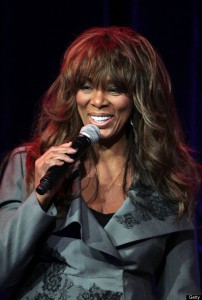 There were a lot of disco divas back in the day, but only one disco queen.
There were a lot of disco divas back in the day, but only one disco queen.
But more than that, Donna Summer, who died Thursday at age 63, was an artist. Her electronic experiments with Georgio Moroder were nothing less than art rock – but that rare kind that also sold a lot, and helped create electronic dance music at the same time.
She was the rare dance floor queen who also produced art – her “Bad Girls” album is a tour de force meant to be taken as seriously musically as “Fulfillingness. First Finale.”
She perservered to be a mainstay in the MTV era of the 80s. “She Works Hard for Her Money” you might say. But she is also one of the few singers of era whose voice stayed strong over the years – almost surprisingly so.
I last saw her perform only last year – performing briefly with David Foster in a hotel ballroom at the TV Critics Association winter press tour in January 2011, where she kicked up that show a notch, looking great as you can see from this picture, and sounding great as well.
When I interviewed her in 1995, she had an idea why her music had endured.
“It’s happy music, to tell you the truth. There was a joy about that period,” Summer told me. “I think that joy has been kind of lost because it’s another time now. But people want to have a sense of that joy.”
That she kept having young fans was a matter of handing down the sounds.
“My take on the whole picture is that, back in the ’70s, when parents were going out dancing, kids were old enough to experience what was going on; those seeds were planted in their memory banks,” she said. “So when they go out now and someone plays a Donna Summer record, or a Chic record, it brings back a whole wave of . . . positive memories.”
Born Donna Gaines in Boston on New Year’s Eve 1948, she sang in churches while growing up there and made her debut at a psychedelic club in 1967. She earned a role in a production of “Hair” in Germany, where she married an Austrian actor named Helmut Sommer. After they were divorced, she kept his name but changed the spelling. Staying in Europe to record, she met producer Moroder, who would be instrumental in her career, not only with “Love To Love You Baby,” which hit No. 2 for two weeks 20 years ago, but the electro-beat of “I Feel Love” and a cover of Jimmy Webb’s “MacArthur Park.” But it was the “Bad Girls” album in 1979 that was not only her best-selling album but also her biggest critical success.
She gained further pop credibility with her 1979 duet with Barbra Streisand, “No More Tears (Enough Is Enough),” but her hits sputtered except for the splashy 1983 hit “She Works Hard for Her Money” and 1989’s “This Time I Know It’s for Real.”
Summer continued to play concerts, but she told me “there hadn’t been that great a demand for me to tour. And I haven’t really wanted to. I wasn’t up to it physically. I was going through a lot of challenges, and I needed time to recuperate and re-evaluate myself and what I did. Then I realized: This is what I’m supposed to be doing.”
Never was she kept back because of the Disco Queen label.
“As long as it doesn’t hold me back, they can call me anything they like,” she said. “I don’t worry about that stuff.
“It shouldn’t be a bad thing that you did something in life that stuck in the minds of people,” Summer said. “The only thing it shouldn’t become is something to hold you back from all you can accomplish.”
I am unable to believe Donna Summer’s has passed over she will be so missed such a fantastic natural talent